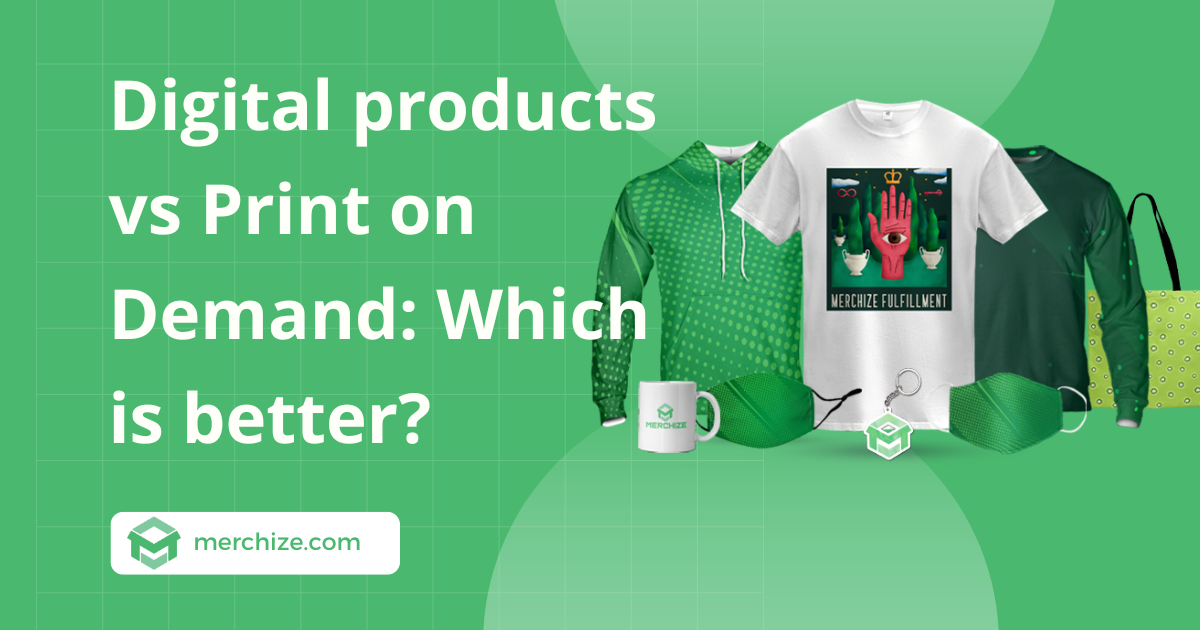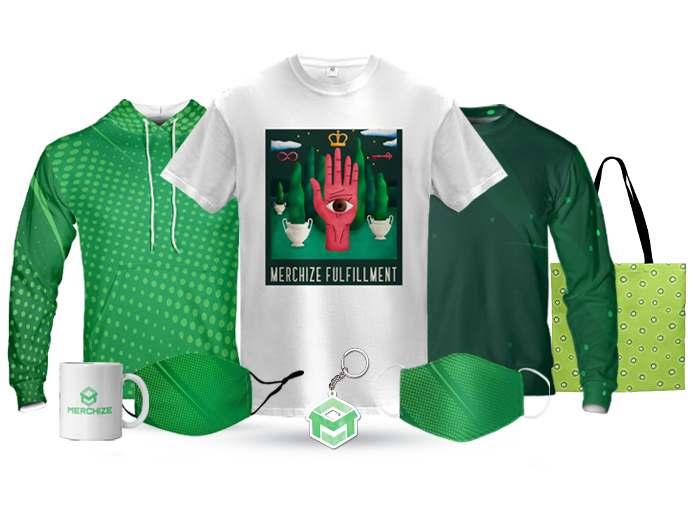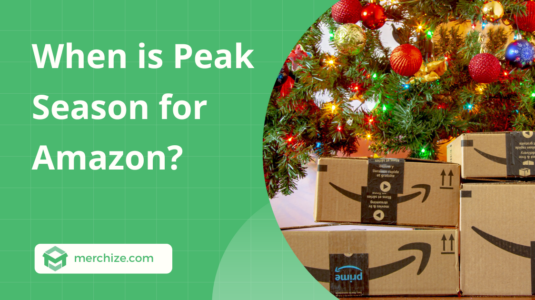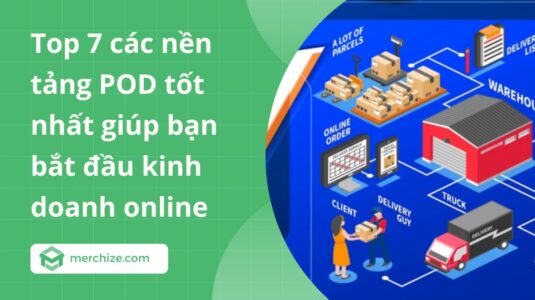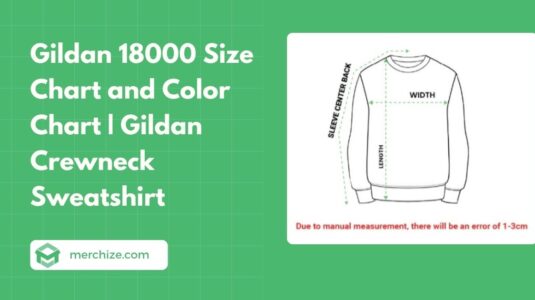Contents
Print-on-demand (POD) and digital products are both popular options for creators and entrepreneurs looking to sell goods online, but they differ significantly in several aspects. Let’s find out the differences between these two options and figure out which is best for you.
What are print on demand products?
Print on demand refers to the business model in which sellers can sell products without owning the inventory and print their products on demand. Print on demand products are still physical products after all. However, sellers won’t have to deal with manufacturing or managing physical inventory.
For a physical print on demand product to be made, a seller has to take care of creating the digital design file only. Print on demand suppliers will use these digital files, print them onto the products, then pack and ship these products to customers. Print on demand products could be mugs, pillows, t-shirts, hoodies and so on.
>>> For more print on demand products, visit Merchize’s product catalog and explore all the possibilities.
What are digital products?
Instead of using digital files and printing them onto a physical product to sell just like print on demand, you can just sell the digital files or any product in digital format. As a seller, you can deliver your electronically, via email, downloadable links, etc. Some examples of digital products include e-books, software, online courses, music, digital art, etc.
Compare print on demand products and digital products
1. Product quality
Print on demand and digital products share one advantage: Both of them lift the burden of managing the physical product. Still, only digital products can ensure a departure from the hassle of physical products. Print on demand, on the other hand, still possesses certain risks regarding the quality of physical products.
For example, your physical print on demand products might have defects. Whether it’s by manufacturing or shipping, you still have to take responsibility and handle refunds and returns for these products.
However, digital products can be duplicated infinitely without causing any inconsistency in terms of quality. Moreover, digital products are easier to fix in case of flaws and failures.
2. Time
Another benefit of digital products is that it takes no time to duplicate. Even though the initial creation might be time-consuming, after that, it takes only a few seconds for you to duplicate and deliver the products. On the other hand, print on demand products are only printed on demand and require many days to deliver, which can take a long time to arrive at customers’ houses
3. Distribution methods
Besides taking care of the production, print on demand suppliers also handle the shipping. Printed products are packed properly and then transferred to the shipping carriers. Moreover, to help sellers to follow the shipping process closely, many print on demand suppliers including Merchize will update the status of your orders and provide tracking codes for each package.
The distribution of digital products is much simpler and can be automated and delivered entirely online. Customers usually receive their purchases immediately after payment, either through download links, email, or access to a digital platform.
4. Cost
Print on demand products cost more than digital products.
To sell print on demand products and digital products, sellers must pay the initial cost of buying the tools and resources to create the digital designs. In addition, to attract customers, you must invest in advertising efforts – It could be paid aids, website optimization, or other social marketing activities. For more details, read our full breakdown of all print on demand costs.
Digital products can be duplicated infinitely, without adding up the price. You can sell a digital file a thousand times but the cost remains the same. On the other, with each new item produced, print on demand products will cost the same amount to make, not to mention other costs like packaging, branding inserts, and shipping.
5. Profit
Cost aside, let’s compare the profit of digital and print on demand products:
Generally, digital products are available at a lower price compared to physical print on demand products. However, it also costs much less to produce, not to mention that the cost stays the same regardless of your sales volume. It means, the more you sell, the higher your profit margin gets.
In the case of print on demand, the profit margin sees no significant changes unless you manage to lower the cost. To gain more profits from print on demand products, alongside increasing the sales volume, you must find ways to optimize the cost, from the production to advertising cost.
6. Market demand and customers
Physical products are generally more accessible and register a greater demand for digital products. Physical print on demand products naturally inherit these benefits. Any customer who is looking for a physical product can end up buying a print-on-demand item.
Compared to regular physical products, print on demand products have a better advantage in terms of designs. With print on demand, you can customize or even personalize a product, which adds to the appeal. For this reason, print on demand products are usually bought as a gift or a keepsake.
Digital products, on the other hand, target a completely different customer base. Buyers of digital products are usually consumers who prefer the accessible and instant nature of digital products, for example, books, design resources, music, films, tools, and so on.
7. Customization and creativity
It seems that both print on demand and digital products share the same boundless potential for creativity and customization. Both types of products allow creators to bring their visions and ideas to life in unique and captivating ways, and make money from their creativity.
In summary, both print-on-demand and digital products offer unique advantages and cater to different audiences. The choice between them depends on factors such as the nature of the product, production and distribution logistics, target market preferences, and the creator’s goals and resources. Some creators may even choose to offer a combination of both to diversify their revenue streams and reach a broader audience.
